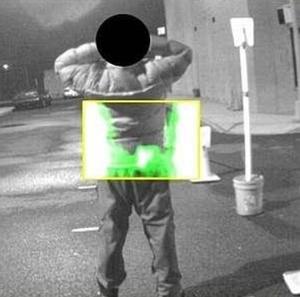DetectionNYPD developing concealed gun detecting tech
The New York Police Department (NYPD) is currently at work on a device that can detect if a person is carrying a concealed firearm from as far as eighty-two feet away

NYPD is developing a portable firearm detector // Source: newsroh.com
The New York Police Department (NYPD) is currently at work on a device that can detect if a person is carrying a concealed firearm from as far as eighty-two feet away.
In a recent speech, Raymond Kelly, New York’s police commissioner, explained that the department was working in conjunction with the Department of Defense to develop the technology.
The scanner would rely on a type of reverse infrared mapping that reads the energy people emit and pinpoint where that flow is blocked by an object like a gun.
“If something is obstructing the flow of that radiation — for example, a weapon — the device will highlight that object,” Kelly said. “This technology has shown a great deal of promise as a way of detecting weapons without a physical search.”
According to Paul J. Browne, a spokesman for Raymond Kelly, developers are currently testing the technology at Rodman’s Neck, a police shooting range.
So far the device has proven its ability to identify concealed weapons at ten to sixteen feet, but Browne said, “we’re looking for it to be effective up to 25 meters,” or around 82 feet.
The NYPD is particularly keen on developing such capabilities because in 2010, 61 percent of the city’s homicides were gun-related. Even with the seriousness of gun violence, the prospects of this technology have left some privacy advocates uneasy.
Donna Lieberman, the executive director of the New York Civil Liberties Union, said he agrees that gun violence is a critical problem that must be resolved, but the technology is a cause for concern.
“We have no idea how this technology works, if it is effective, and what its error rate is,” Lieberman said. “If the NYPD is moving forward with this, the public needs more information about this technology, how it works and the dangers it presents.”
